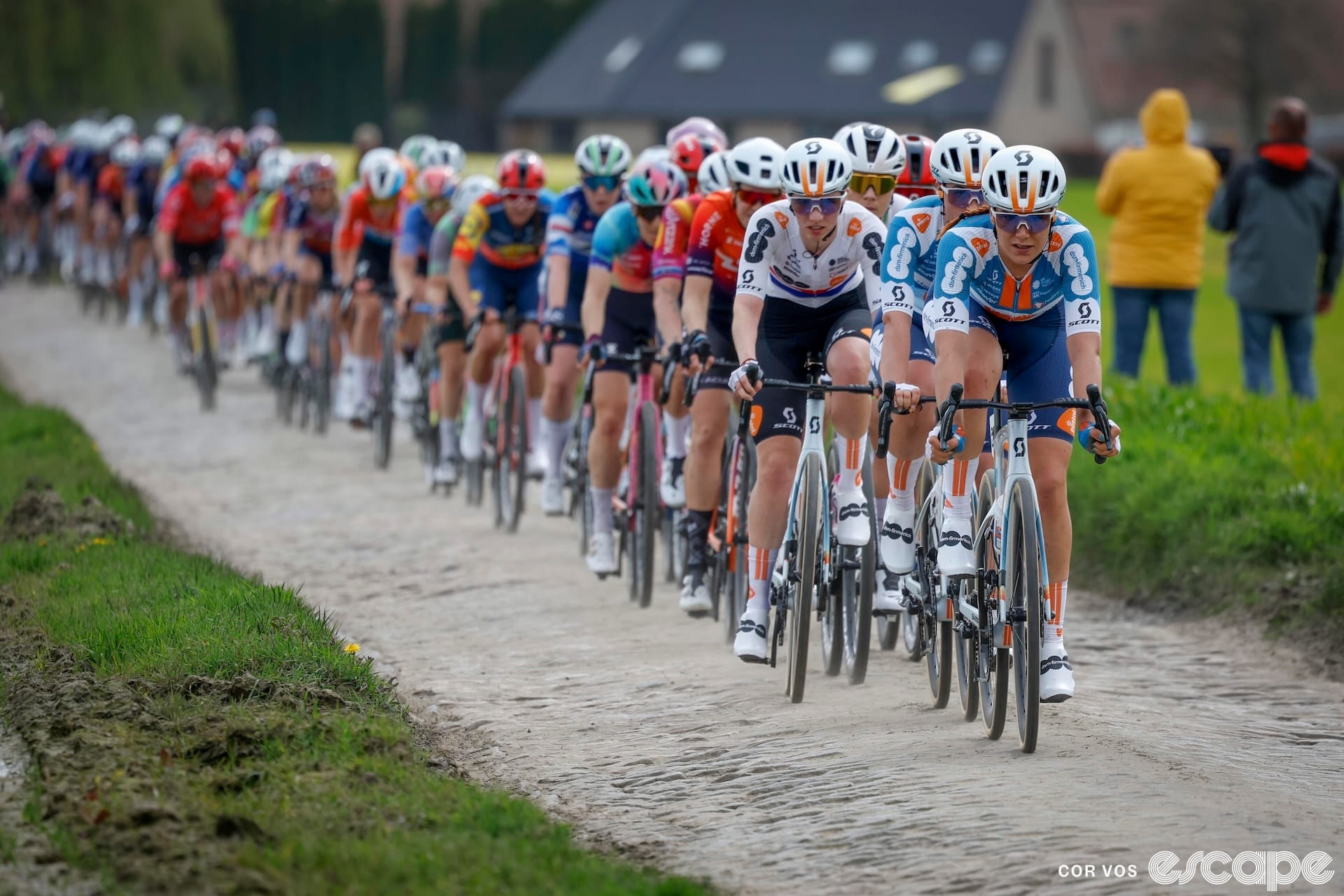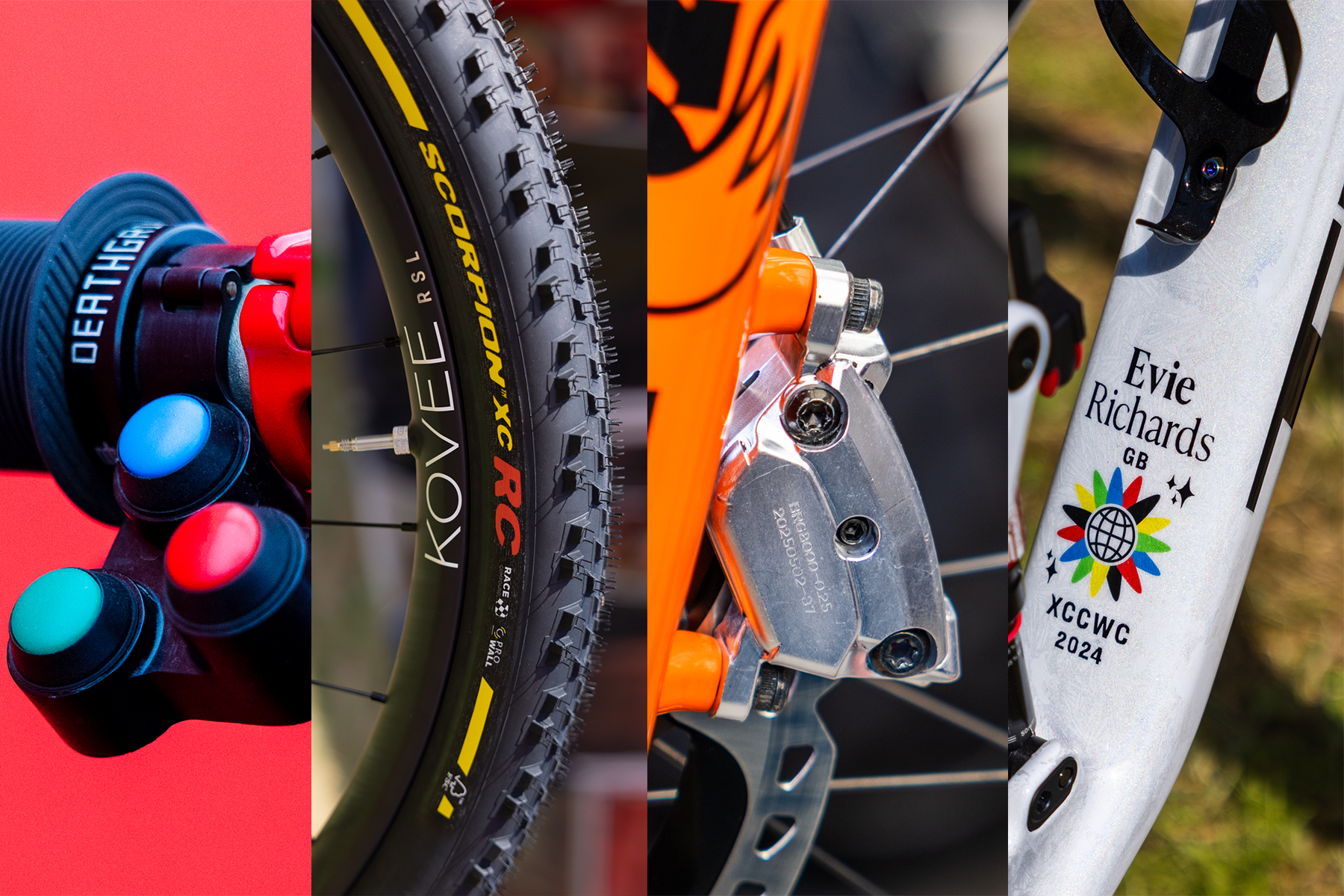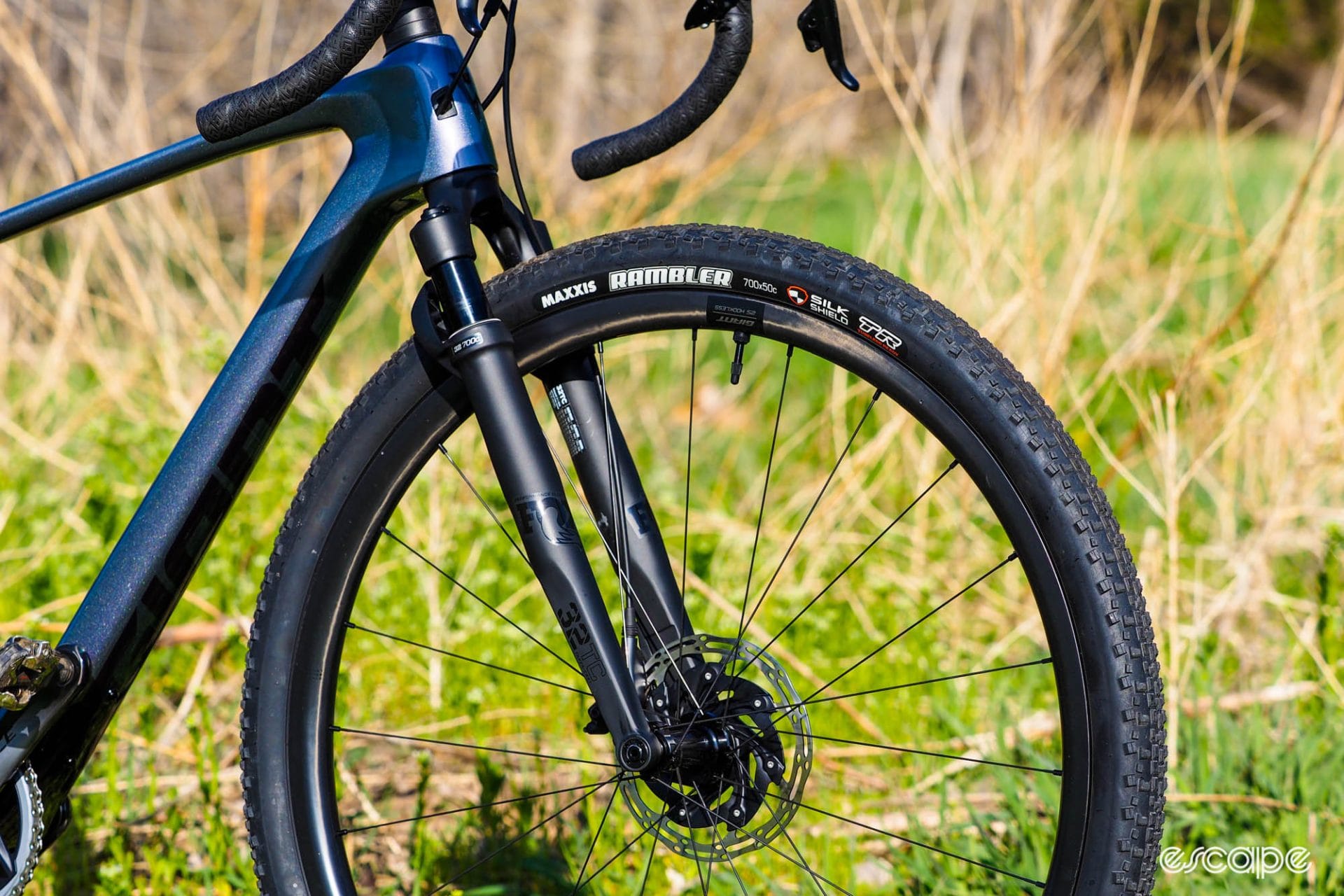It's not the age, honey; it's the mileage. - Indiana Jones in Raiders of the Lost Ark
Imagine having a storming season in your last year of U19 racing. You are winning races nationally, you go to Junior World Championships and manage to podium. You’re on top of the world. Women’s WorldTour (WWT) teams are courting you. Your agent is happy, life is good. You sign with a WorldTour team for the coming years and get ready to move to Europe. Suddenly, you’re on the startline in Spain next to Annemiek van Vleuten and nearly 170 other riders. You spend the day yo-yoing off the back of the peloton, overwhelmed by the step from Juniors into the Elite ranks.
This was the experience of Kaia Schmid in her first race in Europe – the four-day Setmana Valenciana – as part of the WorldTour team Human Powered Health (HPH) in 2022. “That was definitely my first, 'Oh my God. What have I gotten myself into?'" she recalled of her first pro race. Barely 19 years old, she still managed a team-best 16th place on the final stage. But it got harder: after Spain, she raced six major Classics in a row, starting with Italy's gruelling and technical Strade Bianche.
Professional women’s racing is hard. Women’s racing is fast. Even in the last three years, racing in the WWT has only become more demanding on the mind and body. Research is only at the tip of a very big iceberg in ascertaining what exactly it takes to race in the WWT. Racing at this level requires insane levels of fatigue resistance. However, perhaps a better adjective is: durability. Do younger riders, aspiring to enter the WWT, have that durability required? And if the answer is, broadly, no, then does racing's top circuit need an age limit to protect younger riders' development?
A massive step up
“[The] issue is there is no level in between currently, really, so it’s sink or swim with the elites ... I can’t even begin to imagine going from junior[s] to versus [Lorena] Wiebes or Lotte [Kopecky] or Demi [Vollering]," said Jamie Barlow of 258 Protege Sports Management, which represents several top Women's WorldTour riders as well as up-and-coming talents.
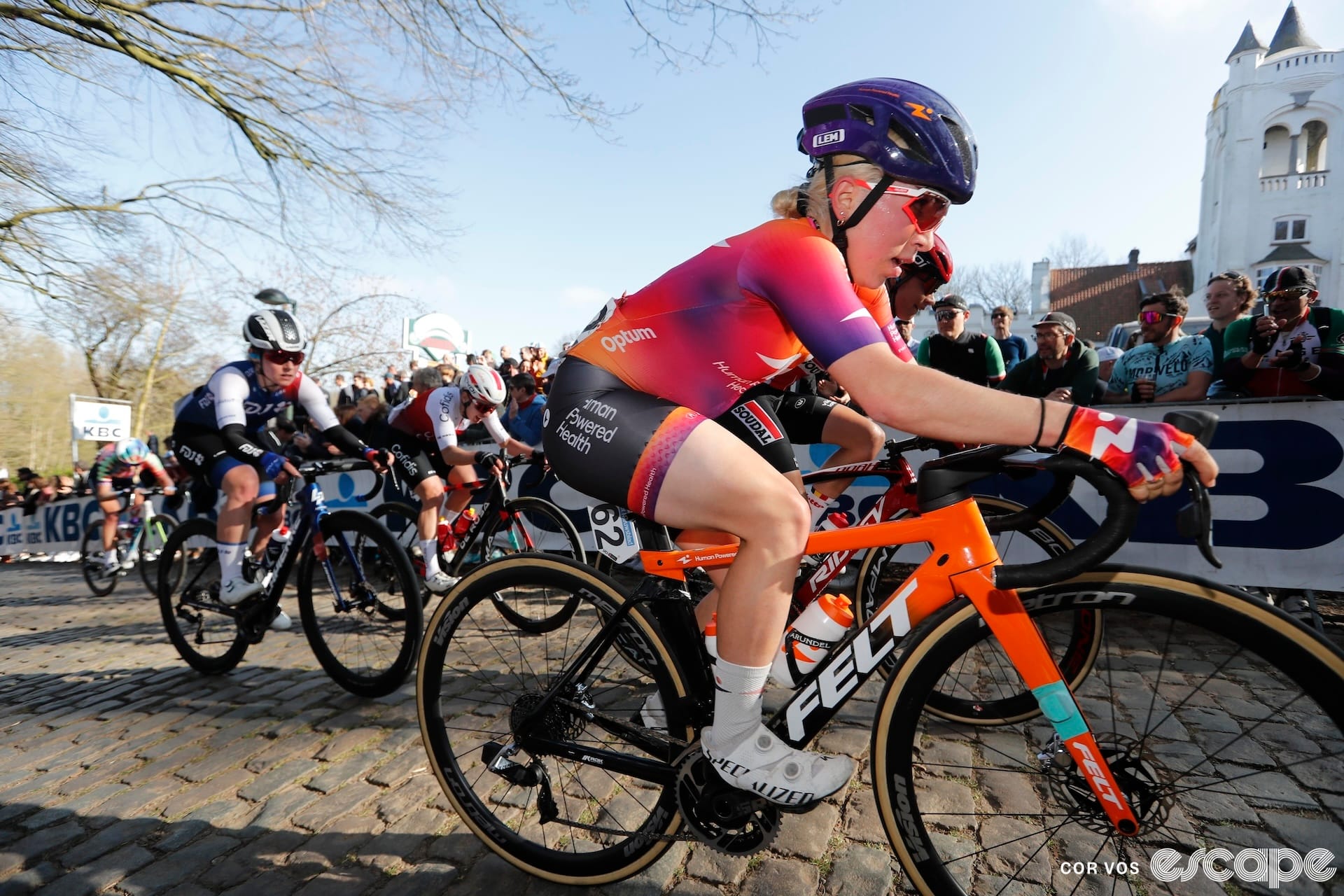
That abrupt transition can challenge even the most successful junior. Schmid came into the world of cycling from skiing after following her father into the sport. When she was 18, she focused solely on road cycling after the ski season was disrupted by the COVID-19 pandemic in 2021. Schmid was offered the opportunity to go to the Junior World Championships in Leuven, Belgium. There she was second behind Zoe Bäckstedt. “I had so much confidence coming from the juniors,” she said.
Another rider who experienced that sudden shock was Alyssa Polites. She was 19 years old when she signed with Liv AlUla Jayco, after finishing second at Elite Australian Road Nationals in 2022 amongst elite company such as future Olympic and World Champion, Grace Brown. Her first year in the WWT, similar to Schmid, was plagued with bad luck, illness and uncertainty.
“I didn’t have too much time racing outside Australia,” she said. LAJ were clearly excited – and rightly so – about the prospect Polites posed for their team. Polites had multiple WWT teams expressing interest, but ultimately decided on LAJ as it seemed like a good environment for development. “[LAJ] really honed in on the fact that they were going to develop me and really look after me, give me a lighter calendar for my first year, and then, yeah, see how it goes, and build it up from there, if I was ready.”
But when asked about her racing calendar in her first year, she admitted, “My first race was opening weekend, which is, yeah, real baptism of fire.” It’s an experience she now can build upon as she campaigns again for the WWT, but at the time it took its toll.
Schmid was lining up next to a World Champion and 170+ starters. Polites was racing on the Flanderian cobbles against stars of the sport. This was their first taste of the WWT. At 19. Both riders came to recognize that was simply too big a leap.
After two years of struggling to find her feet at HPH, struggling to even finish races, Schmid, then 20, decided to sign with the new Liv Alula Jayco Continental Team for 2024, one of the few women's pro teams specifically devoted to development. Immediately, she knew she was in the right place. “I just came in with a lot more confidence, and then, even the first race with the team, I hadn't raced over there [Europe] in seven months, and I went there with confidence, and I finished, what, top 20, but still a year ago that wasn't happening.”
Polites also spent a year on LAJ Continental. Although she's taken another step down for 2025 with club team Meridian Blue, she's still a massive talent, winning the QOM jersey at the 2025 Santos Tour Down Under. In both cases, it's taken a step back to reassess how to move forward.
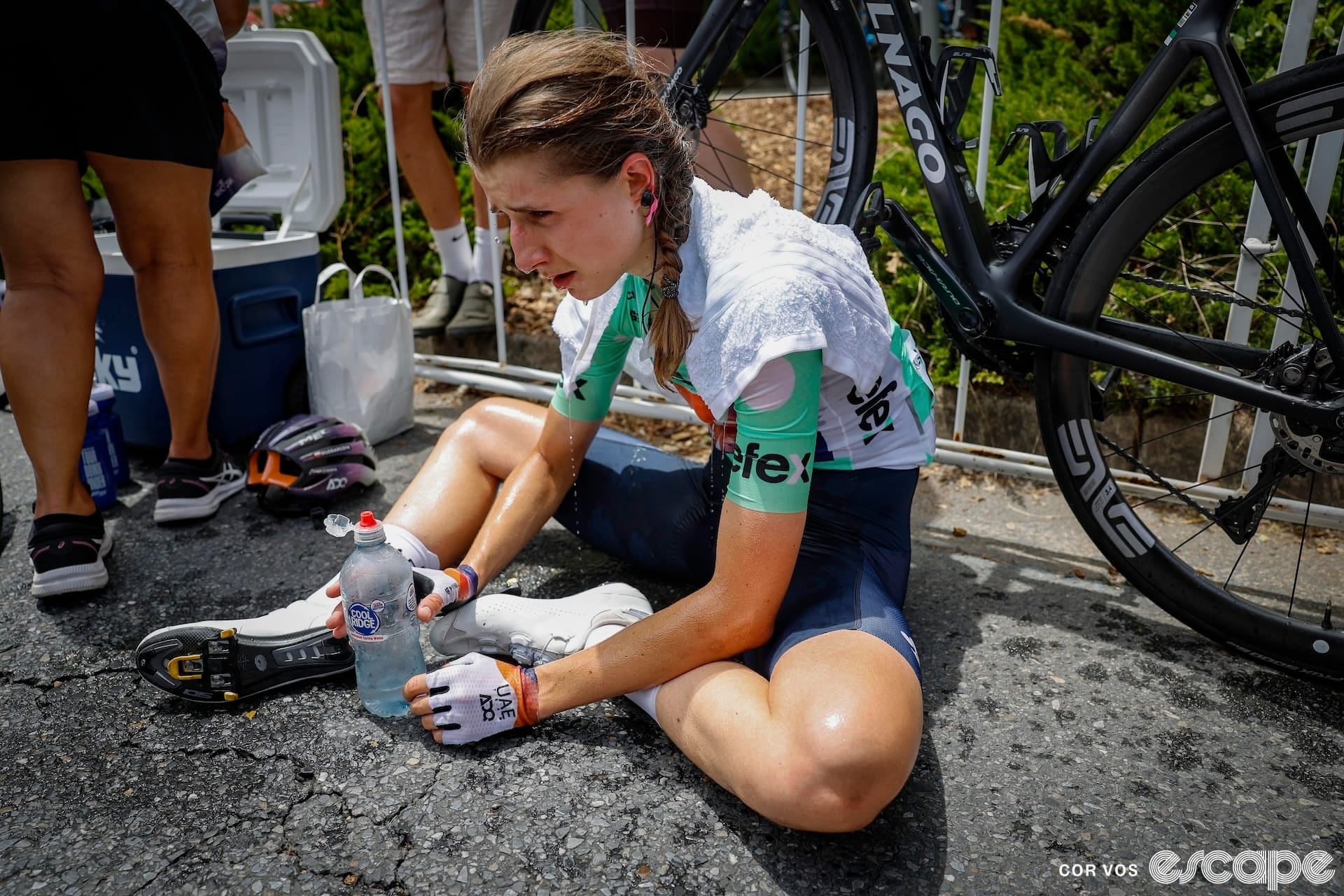
Daniek Hengeveld (Ceratizit) was slightly more patient. Hengeveld was already racing as a teenager with the Dutch Continental team GT Krush Tunap. Then, when WWT teams came knocking, she paused. Hengeveld knew the jump would be big into the WWT, so she decided to remain at her Continental team for a few more years before turning pro with DSM-Firmenich in 2023.
“I had the chance to sign already in my first year for a WorldTour team, but I refused because I wanted to do an extra year in Conti to do the smaller races, so I made that decision myself," she said.
When Hengeveld stepped into DSM at 19 years old, her first races included the UAE Tour and major Classics like Omloop Het Nieuwsblad, the Tour of Flanders and Paris-Roubaix. Big races, and there was adversity. Yet, one must ask the question: were the extra years at the Continental level of benefit to Hengeveld? Perhaps; she can now call herself a WWT stage winner.
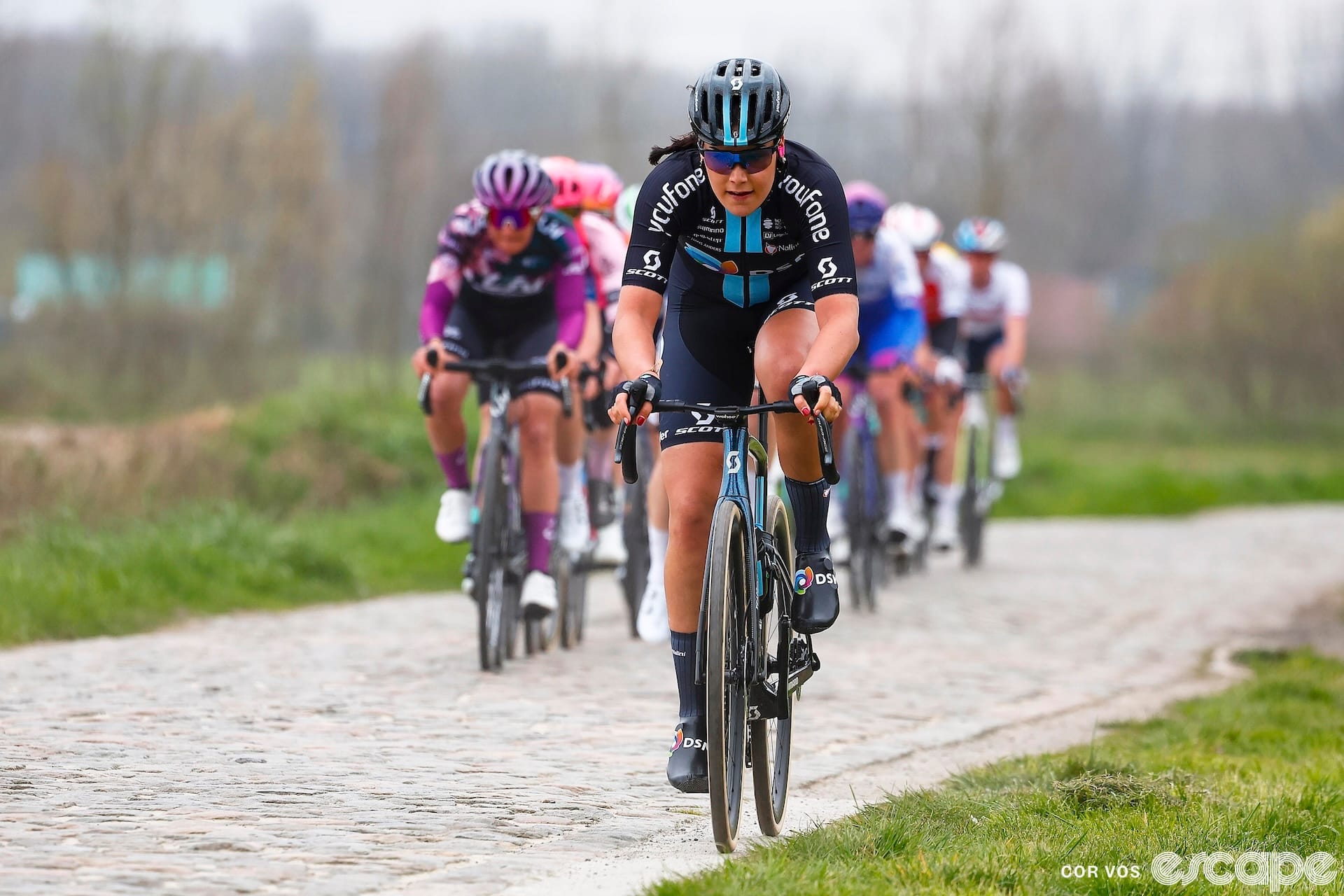
But while some talented riders persist in finding a way forward, others don't. Polites, Schmid and Hengeveld all agree that signing riders young carries the inherent risk of burnout. As Hengeveld stated, “It’s like, you don’t talk about those riders anymore, who actually stopped way too young.”
Away from the gloss and glamour of the lifestyle of a professional athlete, teams are risking burning out younger riders in the pursuit of results.
Too much, too soon?
WWT teams were circling to sign Hengeveld as an 18-year-old, while still a junior. It is a trend we are seeing across both the men’s and women’s professional pelotons. Where most riders once made their pro debuts around 21, it's increasingly common in the men's and women's pelotons for 18-year-olds to jump straight from juniors. Lidl-Trek made headlines at the tail end of 2024 by signing 18-year-old Dane Albert Phillipsen, who was labeled a ‘phenom’ in the press release announcing his four-year contract.
On the WWT side, the Bäckstedt sisters both turned pro at 18: Zoe with EF Education-Tibco-SVB and Elynor with Trek Segafredo. Lidl-Trek again signed four U19 women to their roster on three-year deals last year. Movistar have signed a young duo of their own: Cat Ferguson and Carys Lloyd. Ferguson has already proven herself on the WWT, winning some 1.1 and 2.2 races for Movistar after becoming a dual Junior World Champion in the road race and time trial.
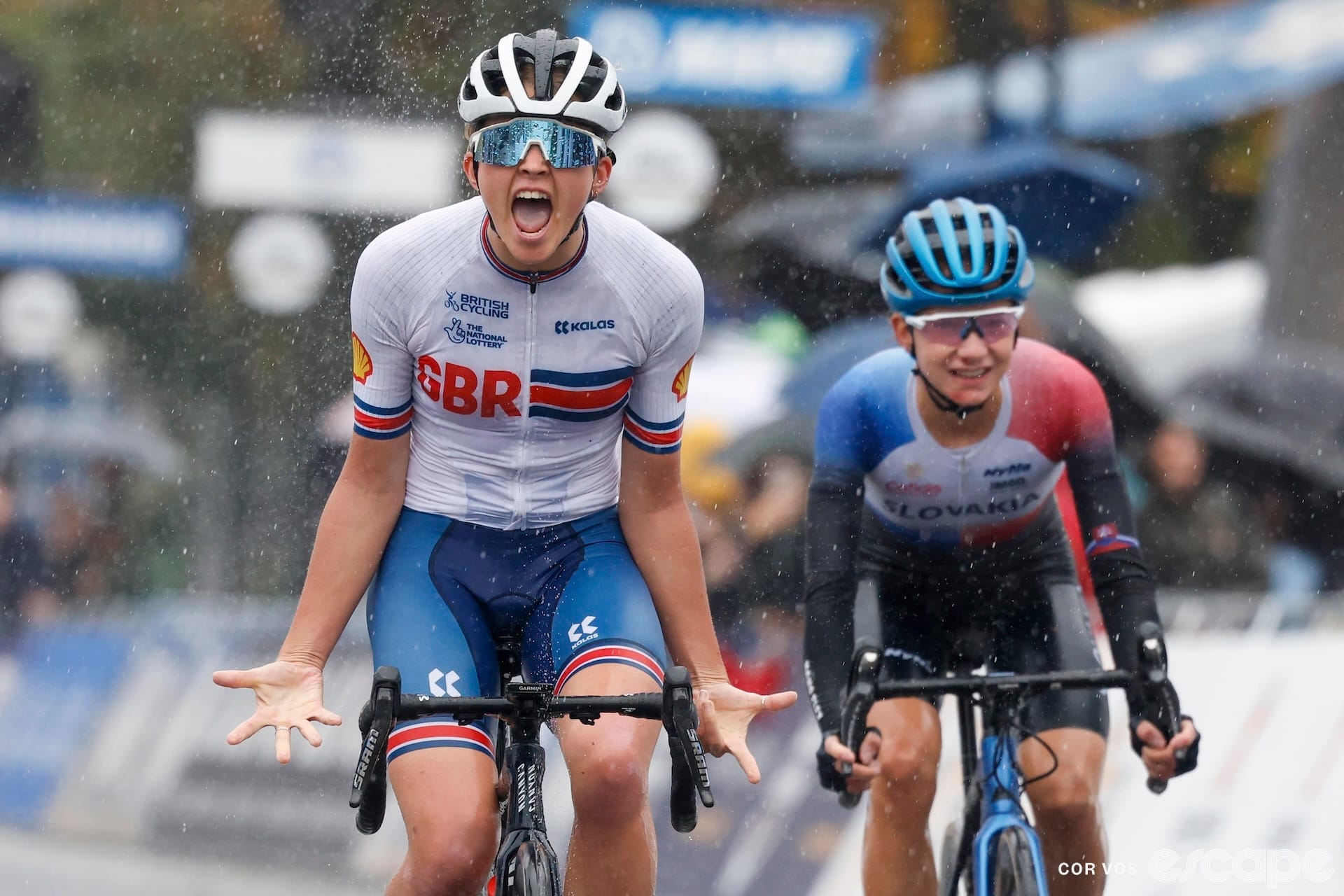
The Bäckstedts highlight whether there should be exceptions to an age limit on the WWT. For the case of Ferguson, we will have to wait and see how she fares in 2025 and beyond, as well as her colleague, Lloyd. Similarly at Lidl-Trek, with the Holmgren sisters, Ava and Isabella, already showing promising results.
But for many others, the leap risks overstress and burnout. What causes riders like Schmid and Polites to walk away from the Women's WorldTour? Sources we spoke with identified several culprits, including the lack of a strong U23 development pipeline, WorldTeams frequently racing lower-tier .Pro and .1 or .2-rated events, and an overall lack of support for riders on and off the bike.
Every single person interviewed for this article strongly asserted that the women need a dedicated U23 level of racing as an intermediate step between juniors and the pros. Imagine being Schmid, going from racing other 18 year-olds to competing against Van Vleuten and Chloe Dygert in a matter of months. Or Polites, having to build the fatigue resistance of an elite racer to handle the physiological load of a full WWT racing calendar. These riders would have benefited enormously from a dedicated space for riders of similar development levels.
The men’s peloton has had a separate U23 category since the mid-1990s. It was a tried and true pathway for riders to cut their teeth at the high level of racing before stepping into the same peloton as the Schleck brothers, Cadel Evans or Bradley Wiggins. However, the success of stars like Tadej Pogačar and Remco Evenepoel, both of whom turned pro straight out of juniors, has put stress on that system too, and even the men’s teams are trading scouting talent in the U23 category for the excitement of finding the next Pogačar or Evenepoel as a junior. But the pressure is immense.
Take Phillipsen. He started his WorldTour career at the Tour Down Under in mid-January, finishing a notable fourth on stage 3. Four days after the longest stage race of his career, he raced the Surf Coast Classic in Geelong, finishing 44th in a field of 90. Other pros then had a chilled cool-down ride before starting their recovery for Cadel’s Great Ocean Road Race a few days later. Not Philipsen; after the race, he continued to ride for another ~90 km. In the end, he rode over 250 km at 268 watts.
Phillipsen and his coach were sharply criticised for the huge ride, even labelling it as irresponsible. French journalist Romain Briquet commented, "In French, we use the word 'cramé' (exhausted) for young riders who train way too much at a young age and then at 25 or so 'have nothing left'. There are so many examples of this. Doing too much at 18 is the best way to lose your motivation and have a 'broken' body at 30 … I don't understand how the Lidl-Trek coaches can accept something like this for an 18-year-old rider."
Briquet has a point. Progression must be staged and durability must be built. Yet, men’s teams are encouraged to race young riders higher due to their exciting prospects. Renowned Australian coach Nick Owen of NOC Sports Science currently coaches Luke Plapp and Ruby Roseman-Gannon, and was instrumental in Lucas Hamilton’s ascension, among many others. Owen is firm that a staged approach is essential to training younger riders. Rushing the process, he said, “is rarely a successful recipe for long term athlete development and success as a senior athlete.” (Owen, formerly a chef trained in classical French cooking, knows a thing or two about successful recipes.)
“One of the concerns with the recent obsession with recruiting cyclists as U19s or straight out of juniors is that coaches and athletes will push the boundaries with training volume and intensity at the expense of other equally important factors," he said. "There are countless examples in Australian cycling of extremely talented (and successful) junior cyclists who haven't made the transition to the senior ranks and in my opinion focusing on short term results at junior level is one of the main reasons for this.”
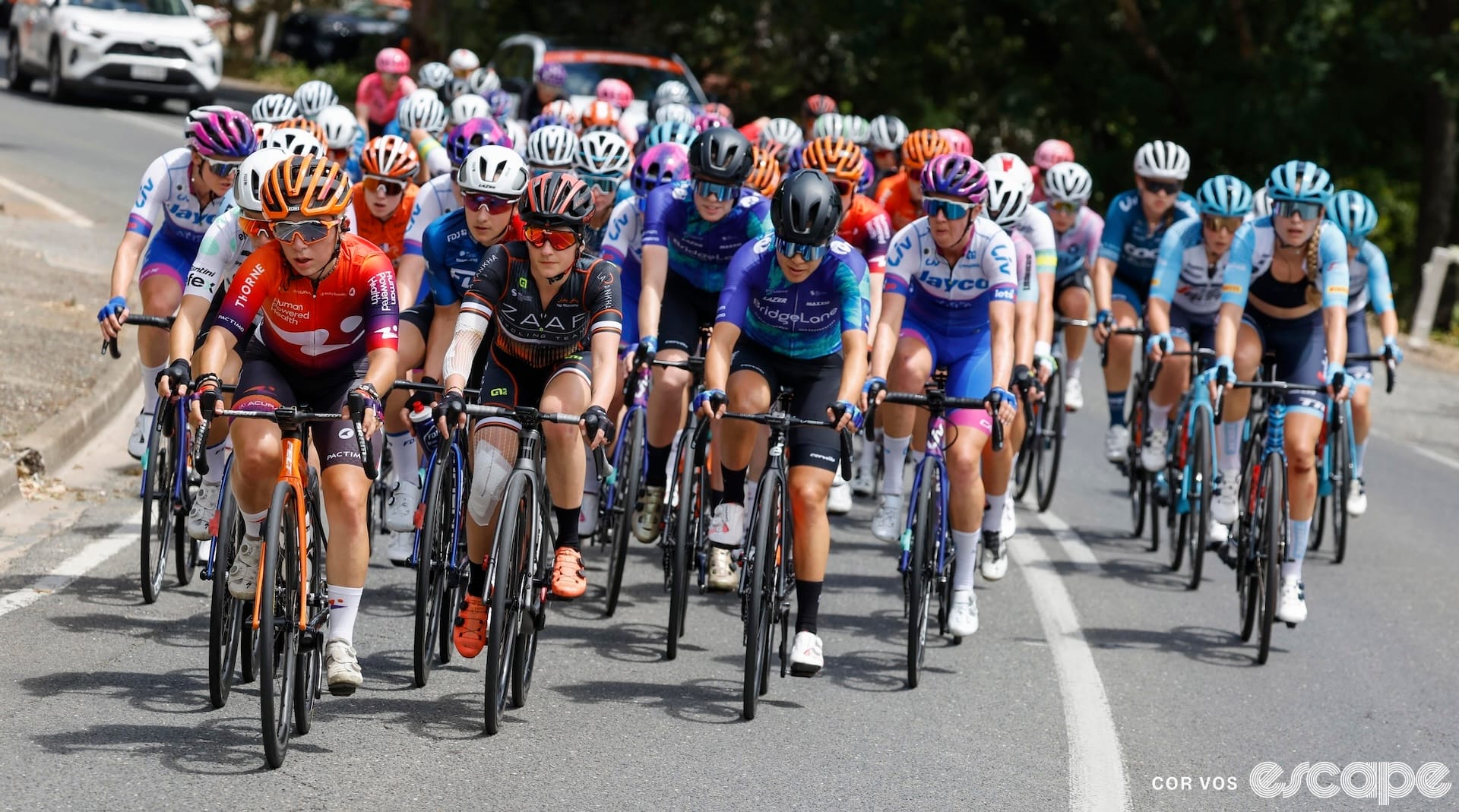
Riders in the women’s peloton are more aware of this risk, and, hopefully, are preparing for it accordingly. Ferguson said as much to Rouleur: “...there aren't really many under-23 development teams. This means that for girls, one of the only ways to step up is straight to the WorldTour, so you have to be prepared for that."
In addition to team excitement over new talent, there is a financial incentive for teams to look to younger riders and trial them. UCI rules for WWT roster size [PDF] say that teams must have a minimum of 10 riders and a maximum of 20, with up to two additional spots available for "new professionals," defined as a rider under the age of 23 signing a first WorldTour contract. New professionals receive a minimum salary of €31,768 (employed riders), more than €6,000 less than the minimum salary for veteran riders. That new professional status sticks with them for two seasons, even if they change teams. Those rules are almost identical to the men's WorldTour, but lower minimum salaries and smaller team sizes make the role of new professionals even more crucial in women's racing.
Additionally, just as in men's racing, starting August 1, teams may take on two trainees: elite, U23 or second-year junior riders who can race for the team for the remainder of the season. What's more, trainees are paid a flat rate of 50% of the minimum salary, as calculated on a daily pro-rata formula. In short, between the new professional and trainee rules, women's WorldTeams can get up to two additional full-season riders and two more late-season riders for a fraction of the cost of veterans. With seasons stretching out but not budgets, it's no wonder teams jump at the prospect of signing new talent who can potentially deliver huge ROI for less.
Now for the proverbial elephant in the room and the key difference in the women’s peloton: There is no separate U23 category throughout the season. The women have been calling for an U23 category for years. Not only would that allow for fair racing, but it would provide the learning ground for these riders to build into sustainable and long careers. Hengeveld agreed, adding that, without a U23 program, riders who are high performers feel the pressure to perform similarly to their older colleagues in the big races.
“They say, 'Oh yeah, we're development and no pressure,' but … we put that pressure on ourselves, and we see other girls in our team doing good in those races, and we want to be as good as them, and then they [the team] don't see that perspective," she said.
Thankfully 2025 will for the first time see a separate U23 race in women’s road cycling for the World Championship. Hopefully, that should spark movement to create more exclusively U23 racing opportunities throughout the year.
So, on the question of age …
If an opportunity to go pro on the WorldTour came knocking, would you turn it down? Even if you are just 18? Many wouldn’t and haven’t. Hengeveld was an exception. Most grab the opportunity with both hands.
But is it fair or right to put the onus on joining the WorldTour on a rider aged 17 or 18? As Schmid's and Polites' experiences show, these riders need robust support at that stage in their career.
And that goes extra for riders from nations outside the sport's European center. “I really wish that teams had that support and structure to be able to provide riders that are international, especially from Australia, to be able to set up," said Polites. "Team housing would have been great, especially for a young rider. I feel like that's super important. It's just an extra stress that they don't need. And definitely would help contribute to not burning out as well in the long term.”
Schmid voiced a similar perspective. “It is a big learning curve as an American or an Australian, or, like, Kiwi, we're not from Europe, like, it's a bigger learning curve for us, you know, in every aspect, even just learning how to go about the town," she said. "And when you get sick, where do you go for medical? There's so many things to learn in every aspect.”
For both riders, moving that far away from family is an added stress that contributes to their feelings of burnout in the WWT. They feel that more support for all younger riders would have eased the issues they then experienced.

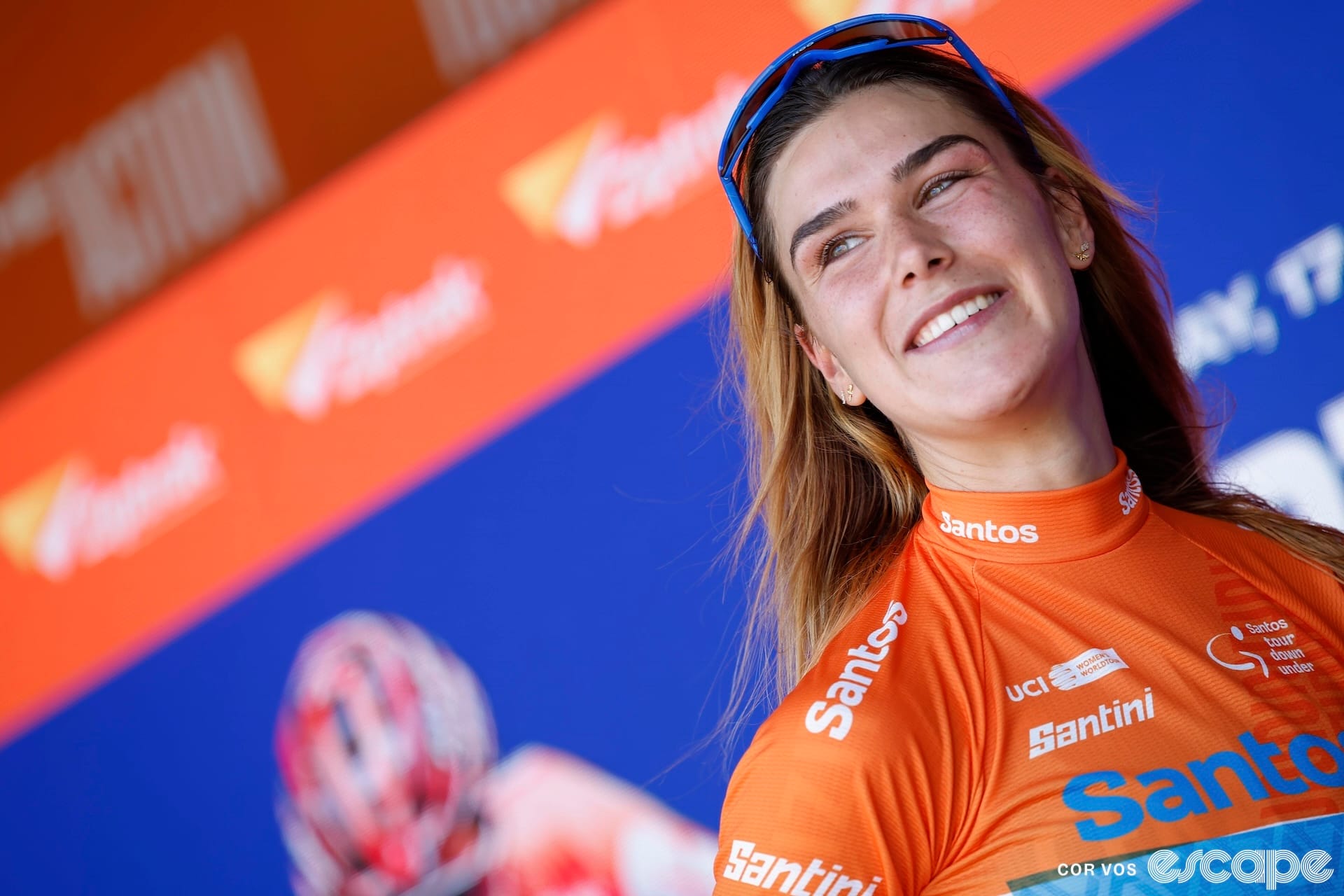
Hengeveld's switch to Ceratizit has opened up opportunities like her bold stage 1 solo at the Tour Down Under.
From an agent’s perspective, Barlow, who manages Ferguson & Roseman-Gannon, is conscious of this strain. “Riders need to be supported off the bike and away from races also this for me is key … but no team has a Junior/U23 & WWT set up as of yet," he noted. "This [more development teams] would be the perfect set up to progress girls and race them up and down before turning WWT when they are physically and mentally ready.”
There are some initial moves by the UCI to resolve those progression issues. The governing body has introduced a new tier for teams, aligning them more closely to what the men experience. A ProTeam tier allows three levels of racing available to riders as they progress to the WorldTour. But that only goes so far, and ProTeams have similar rules around new professionals and trainees, albeit at even lower minimum salaries. Teams are aware of the struggles faced by younger riders in the WWT as they make the step up, however many don’t have the resources available to provide the structure required.
Tight budgets, small roster sizes, and an ever-increasing racing calendar means it is harder and harder for teams to give riders the time and space to develop. Ultimately, bike racing is a business and its currency is victories. Budgets are stretched razor-thin and every rider on a team must be in a position to contribute to that goal. It’s a brutal existence.
Women’s cycling is growing, and growing fast. The top salary in the WWT has increased by over 200% since 2023, although the median has grown at a much slower pace. Viewership is on the rise. The women have a Milan-San Remo in 2025. Women's racing is forging a brand all of its own: fast, aggressive, and attritional racing that ensures only those who have that durability and racing capacity rise to the top.
Let’s just hope there are fewer of those left behind in the pursuit of excellence.
Did we do a good job with this story?

